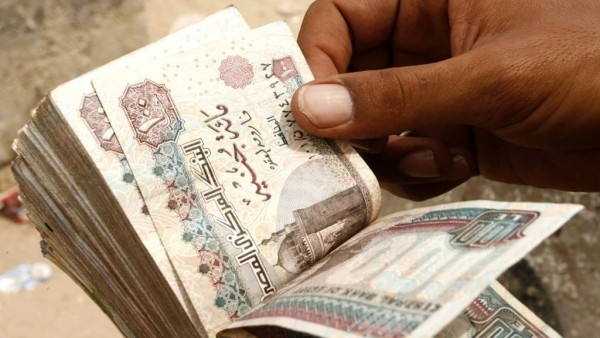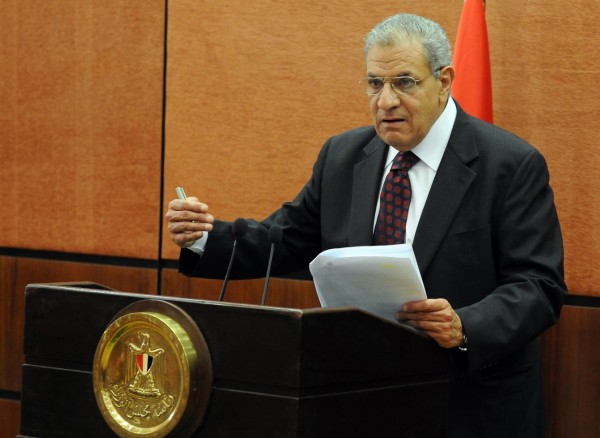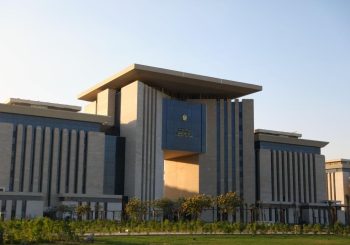With President Sisi having officially ratified the 2015/2016 budget, which outlines the country’s fiscal policies over the coming year, it is worth taking a look at some of the (highly optimistic) proposals, and analysing how they could possibly be achieved.
WHAT ARE THE BUDGET’S KEY POINTS?
The three broad “pillars” of the new budget are: reduced public debt, financial stability and confidence and increased spending on public services and development. As part of this, the ministry has set an ambitious target of 5 per cent economic growth for the fiscal year 2015/2016. This is intended to continue rising to 7 per cent for the fiscal year 2018/2019.
One of the key concerns of the budget – as expected – is the deficit. The current estimate of Egypt’s deficit for the fiscal year 2015/2016 (Egypt’s fiscal year starts on July 1 and ends on June 30) is EGP 251 billion – 8.9 per cent of the country’s GDP (gross domestic product). The budget outlines the Finance Ministry and Central Bank’s plan to fund the deficit in the first quarter by borrowing EGP 262 billion.
The finance ministry also said that 50 per cent of public spending will go towards social protection programmes. The total increase in expenditure according to the new budget will be of 17.4 per cent, reaching EGP 864 billion.
Spending on wages, employee compensation, grants, debt services and social benefits will also reach 80.2% of the expenditure according to the new budget, as public sector wages are projected to record a 14 per cent growth. Spending on public investment will also increase to EGP 75 billion, representing a 66 per cent increase from last year and 9 per cent of the overall expenditure.
The new budget has allocated EGP 61 billion for fuel products’ subsidies, EGP 31.1 billion to electricity subsidies and EGP 38.4 billion for commodities and bread.
Finally, revenue for the forthcoming fiscal year is expected to be EGP 622.2 billion – a 28 per cent increase from last year. The government has abolished a number of taxes that could have been additional sources of revenue – namely the capital gains tax, which has been put on hold for two years. Following from this, tax income from international trade is expected to increase by 24.8 per cent to EGP 29.6 billion.
IS THIS VIABLE? AN ECONOMIST’S BREAK DOWN OF THE BUDGET
In order to fully understand the viability and limitations of the new budget, Egyptian Streets consulted with Alaa Mohamed – one of the economists at the Egyptian Centre for Economic Studies:
“So here’s the deal: with the newly ratified budget, the government will be able to decrease the budget deficit to 8.9 per cent of GDP, down from 9.9 per cent of GDP last year. This shows that there was some sort of rationalization in terms of government expenses and allocating more revenues through taxes mostly.

“However, the government is intending on funding the deficit (EGP 262 billion) through borrowing. How will the government borrow that money? Through treasury bills and loans? Herein lies the paradox because firstly, if the government resorts to treasury bills, this means public debt will have to increase – and it is already high enough as it is (around 91 per cent of GDP). They would therefore not be able to reach their target for public debt (83.5 per cent) – rather, it would likely end up reaching between 87-89 per cent of GDP.
“Secondly, if the government resorts to loans from international donors, this will increase their debt service payments (which already is at EGP 244 billion, representing 28 per cent of total expenditure). This could counter the planned decrease of the deficit and further increase pressure on the budget.
“One thing that caught my eye as well is that 80 per cent of what the government is planning to pay as expenditure will go towards wages, employee compensation, grants, debt services and social benefits. That is too much! Especially since in its official correspondence, the Ministry of Finance mentions the following:
وفيما يخص اجور العاملين بالجهاز الاداري للدولة شدد وزير المالية علي اهمية تثبيت المكافآت والبدلات لجميع العاملين بالدولة بلا استثناء باعتبار ذلك احد الاصلاحات الهيكلية والمالية الضرورية لتحقيق الاستقرار المالي.
(With regards to the wages of state employees, the finance minister stressed the importance of having fixed bonuses and allowances for all state employees without exception as one of the structural and financial reforms necessary to achieve the required financial stability).
“The mechanism of reform is not clear and needs further elaboration. A positive aspect though is the increase in spending on social programmes (12 per cent more). However, the efficiency and success of such will only be felt after implementation.
Public investment spending still stands at EGP 75 billion, which is astonishing: it should have increased given infrastructure needs more improvement and new installations (electricity, roads…etc.)

“Total revenues have increased by 28 per cent, which is good news. However, the government could have done better in terms of revenues, especially in light of with putting on hold the capital gains tax for two years and the further postponement of the VAT taxes (estimated to have brought in around EGP 114 billion in Fiscal Year 2013/14).
“With the new budget, the government is targeting a 5 per cent GDP growth rate, which I believe is doable given the amount of work the government is intending to do, and the many projects set to take place such as the Suez Canal Logistics Hubs around the new Suez Canal.
“However, the government’s plan is too ambitious when it comes to a 7 per cent GDP growth rate for the year 2018/19. This is because, according to the Ministry of Finance’s statement, they are targeting an unemployment rate of less than 10 per cent for the year 2018/19.
“I don’t know if they have taken into account the number of youth who will be eligible to enter the labour market, which could have an upward pressure on the unemployment rate and might offset some of the positive effects of the government’s policies in that area (in other words, labour driven economic growth could still be weak).
“From what I have read, their expected GDP growth rate is monetary based and does not depend on labour generation, which is pretty unsustainable in my opinion. They need to be more focused on creating jobs and not just focusing on balancing their budget.”







Comments (11)
xcn5bsn5bvtb7sdn5cnvbttecc
[…]below you will find the link to some websites that we assume you need to visit[…]
ccn2785xdnwdc5bwedsj4wsndb
[…]usually posts some really interesting stuff like this. If you are new to this site[…]